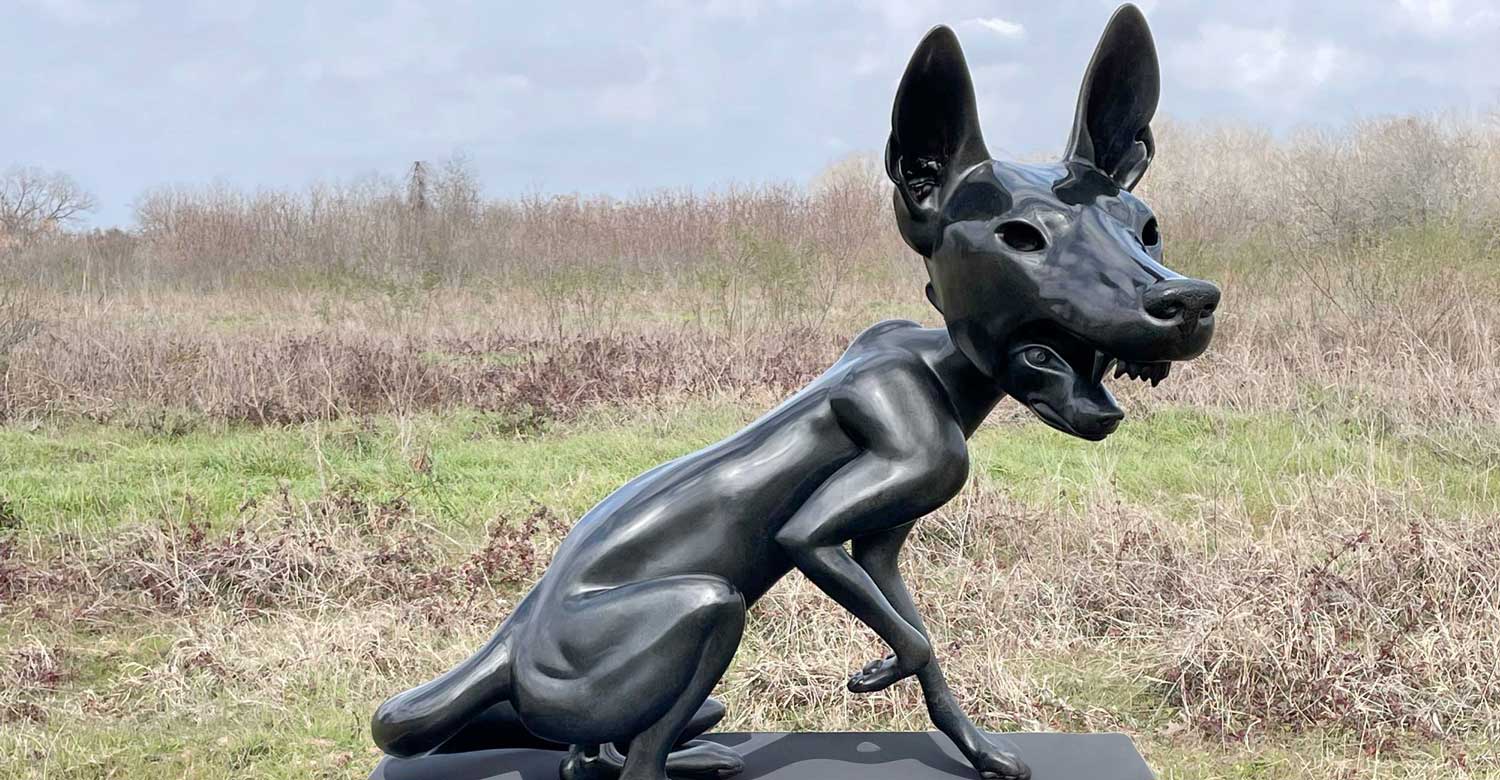Jessica Teckemeyer, associate professor of sculpture in the Department of Art, Graphic Design and Art History at Oklahoma State University, commissioned a 200 percent bronze enlargement of her sculpture “Fox or Foe” with the help of a Humanities, Art and Design-Based Disciplines Research Grant.
“The sculpture ‘Fox or Foe’ is about the moments when we feel vulnerable and overcome those insecurities by adopting a more powerful persona,” Teckemeyer said. “My sly fox has morphed into a warrior. Combining two species aims to provoke contemplation about how the prey has transformed into its predator.”
The HAD Research Grants, funded by the Office of the Vice President for Research at OSU, support research initiatives in creative fields.“Creative scholarship is integral to OSU’s land-grant mission,” said Dr. Christine Johnson, associate vice president for research. “It promotes ingenuity, expression of thought, cultural preservation and community engagement.”
Teckemeyer used 3D printing and scanning technologies to realize the sculpture enlargement. “It became apparent that the MetraSCAN 3D optical CMM scanner by Creaform provided the most accurate digital file,” Teckemeyer said. “I learned new skills in Blender software to refine digital anomalies and enlarged a small section of the scan to print at various enlarged sizes ranging from 150% to 1,000% to see how the surface translated.”
After selecting the optimal scan size, the sculpture was printed in different materials to find the best method for bronze casting. “For the 200% enlargement, the multiple-part model was printed in a 3D Voxel Jet printer,” Teckemeyer said. “The vacated molds allowed for molten bronze to fill the cavities. Bronze is the most durable and desirable material for public art because it can last hundreds of years.”
In addition to the large-scale sculpture, Teckemeyer also created a 75% version of “Fox or Foe” that has been exhibited in galleries in Cincinnati and San Francisco. “I divided a 75% version of ‘Fox or Foe’ into seven parts to print on four Prusa MK3S+ extrusion printers,” Teckemeyer said. “An advantage of the reduced scale is the smaller shipping container, which significantly cuts shipping costs. Ultimately, creating replicas allows the sculpture to be sold to more collectors at a lower price than the original hand-modeled sculpture.”
Teckemeyer’s goal is to show her work in temporary public art exhibitions and to be included in public art collections or museum sculpture gardens in the long term. “Public art is a dynamic, evolving field that plays a pivotal role in society, contributing significantly to communities’ cultural, social and economic well-being,” Teckemeyer said. “My goal is to reach a broader audience with my art to engage in dialogue about building inclusive communities that support all citizens with dignity.”
“My conversations with people about the work have ranged from their personal stories to how it can be an icon for triumph for the underdog,” Teckemeyer said. “Through translating human experience into animal forms, I aim to provide viewers with alternate perspectives. Animals hold symbolic meanings and universal appeal, serving as compelling storytelling characters that resonate with people.”
In her courses, Teckemeyer teaches her students technical skills ranging from 3D modeling and printing to the bronze process and conceptual and creative development. “I teach my students technical skillsets from 3D modeling and printing, the bronze process and how to develop conceptually and creatively,” Teckemeyer said. “I am connecting students with the business aspects of being a professional artist and the knowledge I have gained along the way in leveraging technology to increase productivity as an artist.”
Chris Whittey, chair of the Department of Art, Graphic Design and Art History, emphasized that Teckemeyer’s work with the HAD grant highlights the importance of creative research and draws attention to the work of faculty and their students. “I like to think that the arts help expand and perhaps redefine what research is — or what research can be — and a vibrant studio practice like Teckemeyer’s serves to promote OSU as a leading institution in the dedication to and support of creative practices,” Whittey said. “Her work is exhibited in highly selective venues and regularly receives top honors which, of course, draws attention to the artist and her work, but this visibility also casts a most favorable light on the kinds of research we advance at OSU.”
Subscribe to our Newsletter
3DPresso is a weekly newsletter that links to the most exciting global stories from the 3D printing and additive manufacturing industry.






















